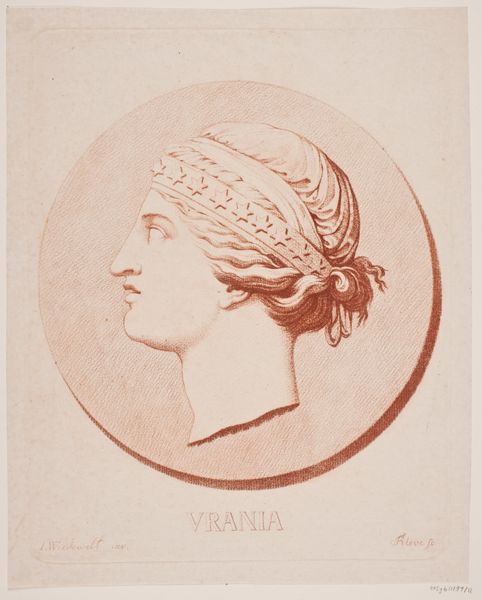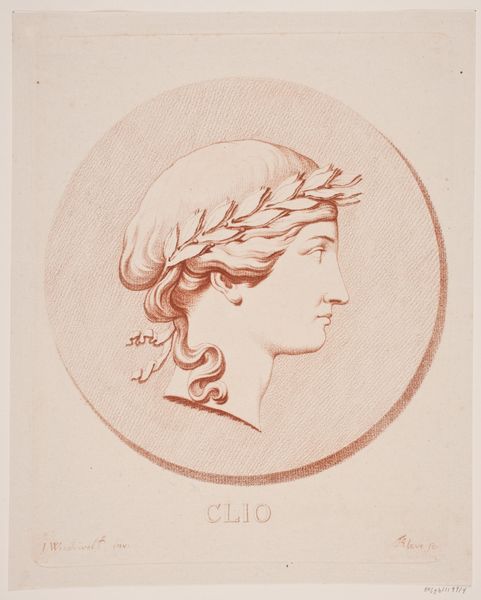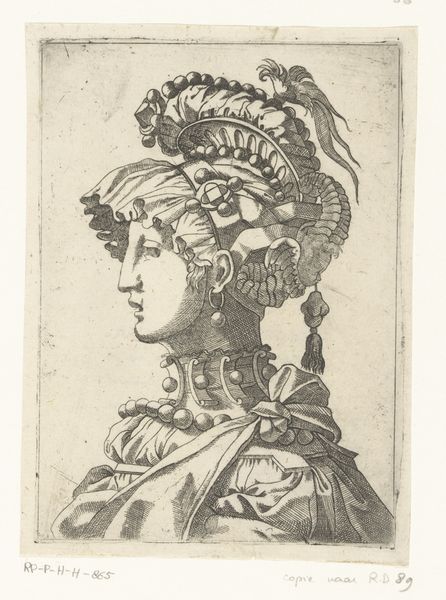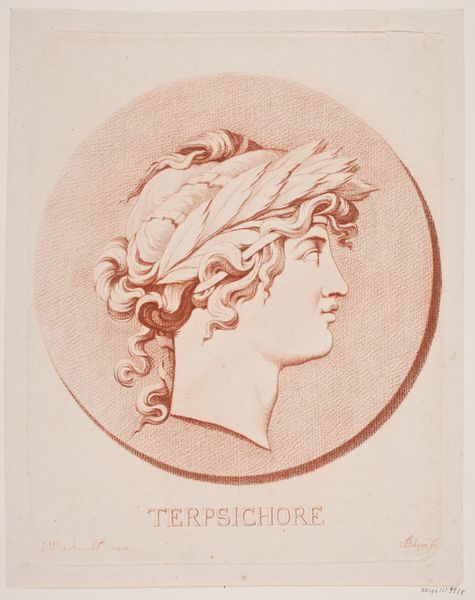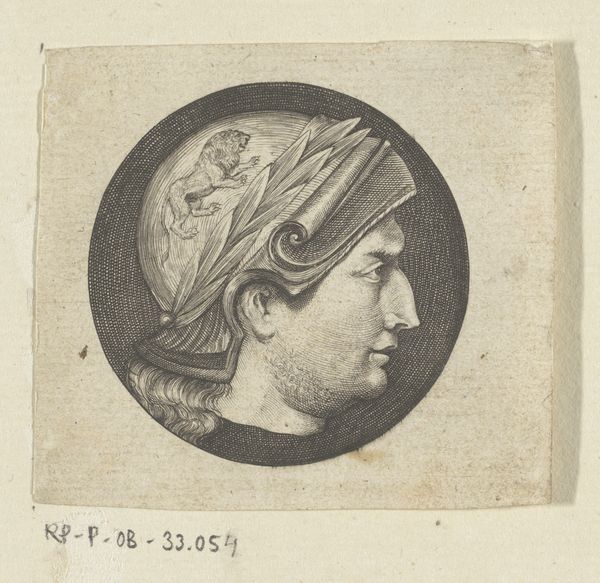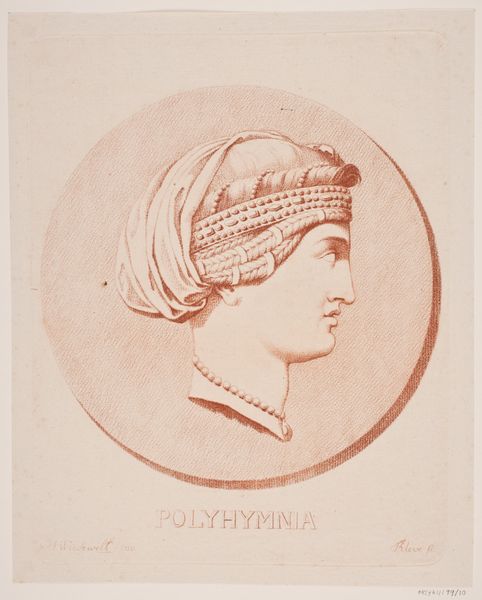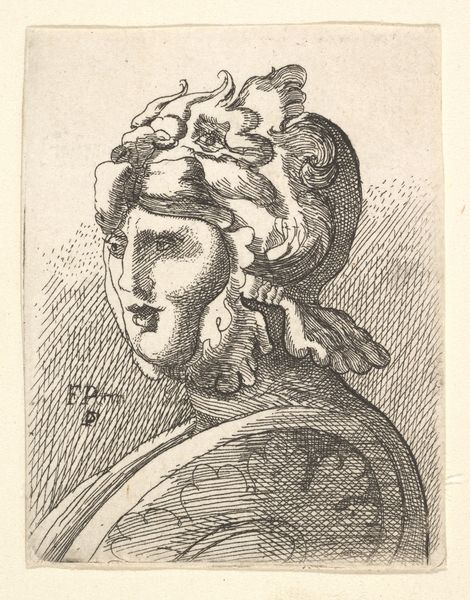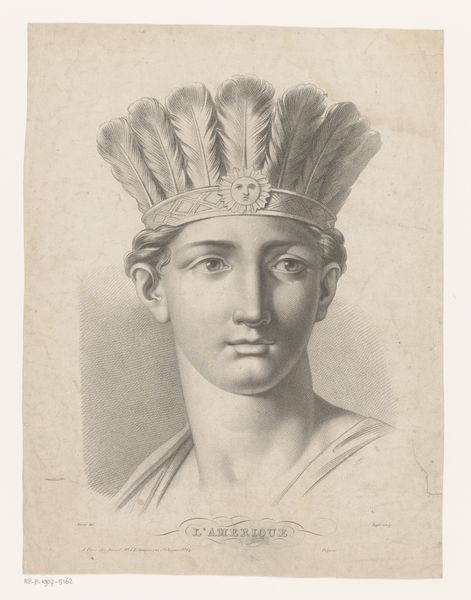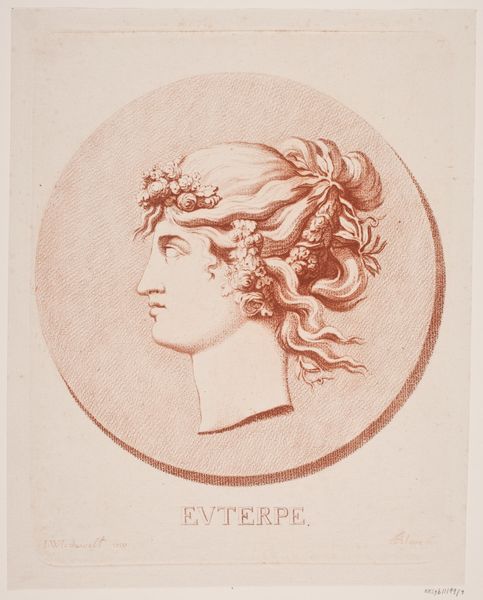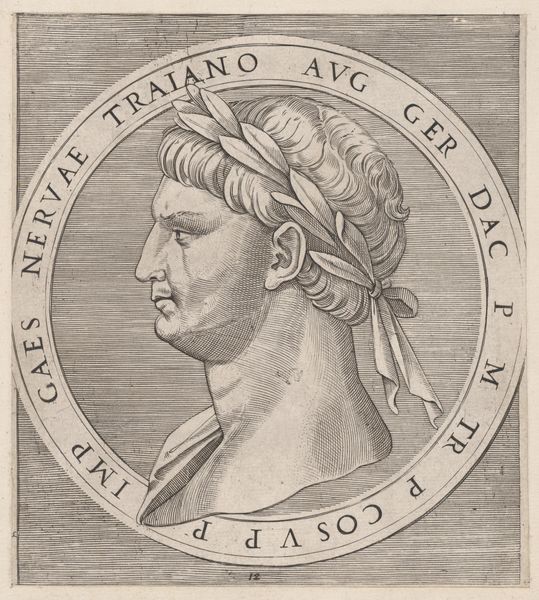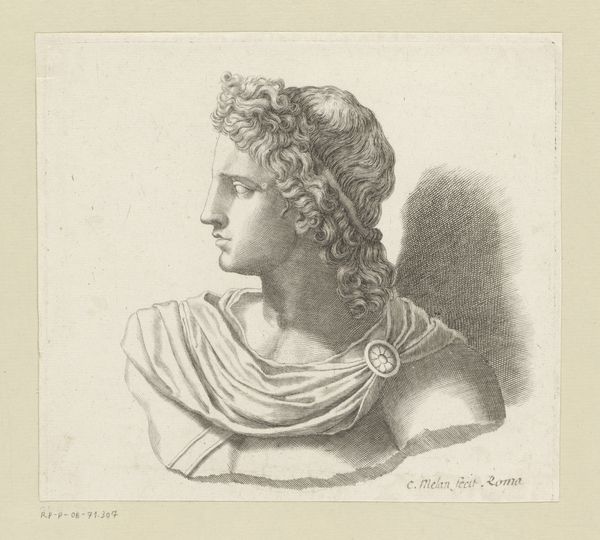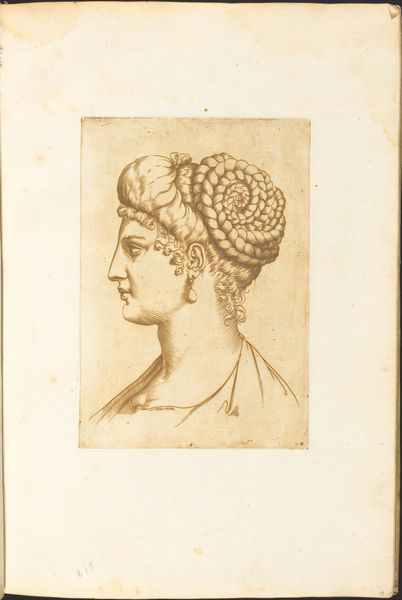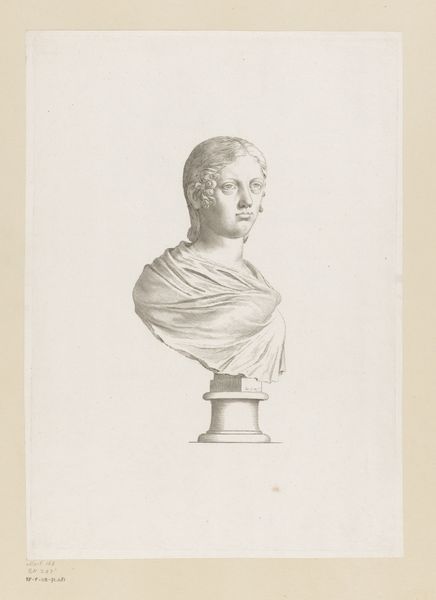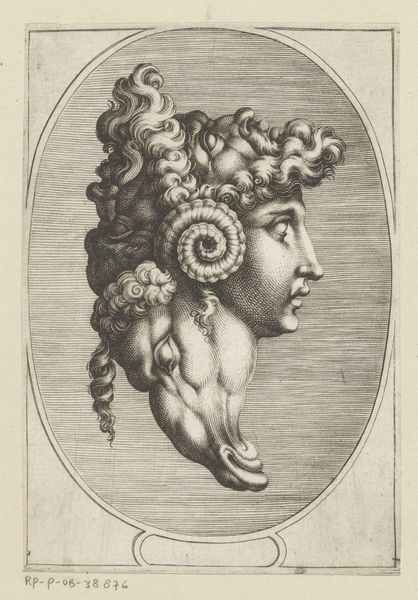
drawing, print, etching, pencil
#
portrait
#
drawing
#
neoclacissism
#
allegory
# print
#
etching
#
etching
#
pencil drawing
#
pencil
Dimensions: 278 mm (height) x 229 mm (width) (plademaal)
Terkel Kleve made this drawing of "Thalia" in Denmark in the late 18th century. Kleve’s work reflects the prevailing Neoclassical fascination with antiquity. But the question is, why were artists in the late 1700s suddenly so concerned with the art of ancient Greece and Rome? Kleve worked during a time when many European societies saw themselves as successors to those ancient republics. To them, the values and aesthetics of antiquity represented a kind of political and artistic purity. This was a moment when royal academies dominated the art world, and many artists and theorists were seeking alternative models in the pre-academic past. The artist depicts Thalia, the Greek muse of comedy and idyllic poetry, in profile. Her calm expression is one of serious contemplation. To understand the revival of classicism, we might examine publications like "The History of Ancient Art," or the records of institutions like the Royal Danish Academy of Fine Arts, where Kleve taught.
Comments
No comments
Be the first to comment and join the conversation on the ultimate creative platform.
